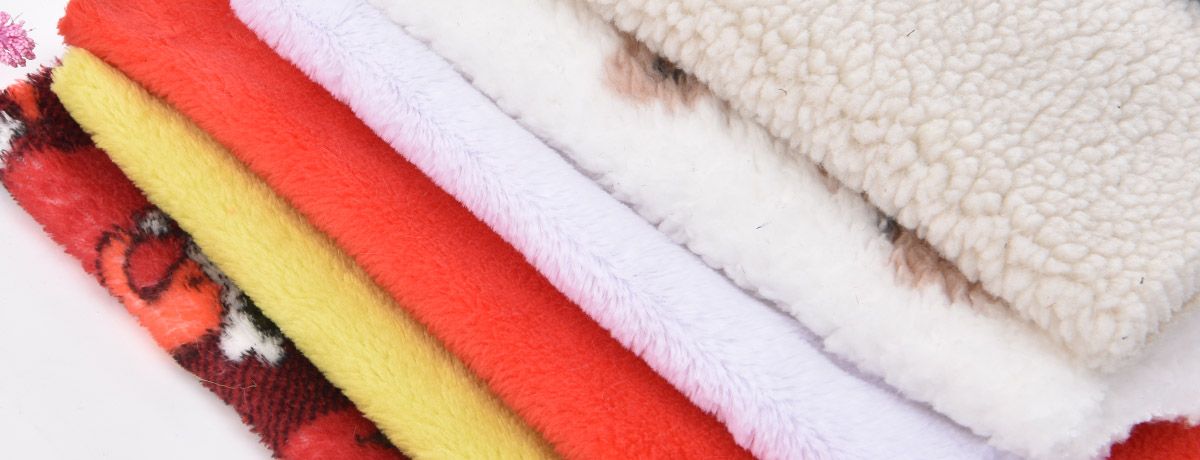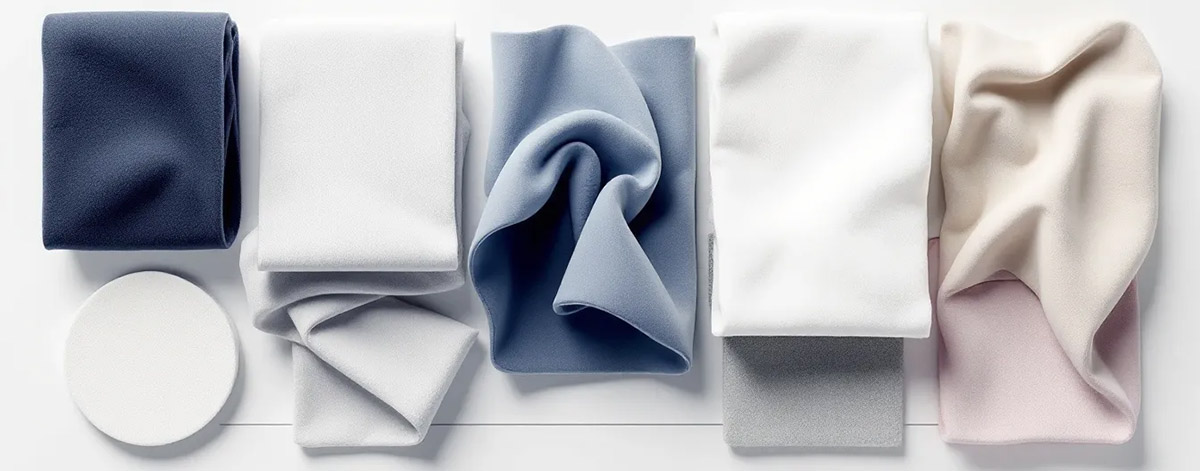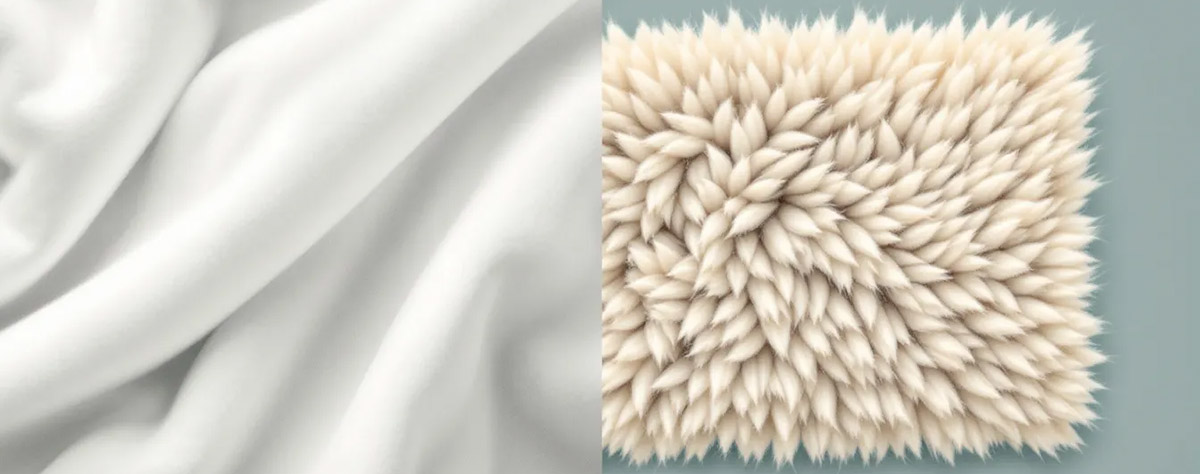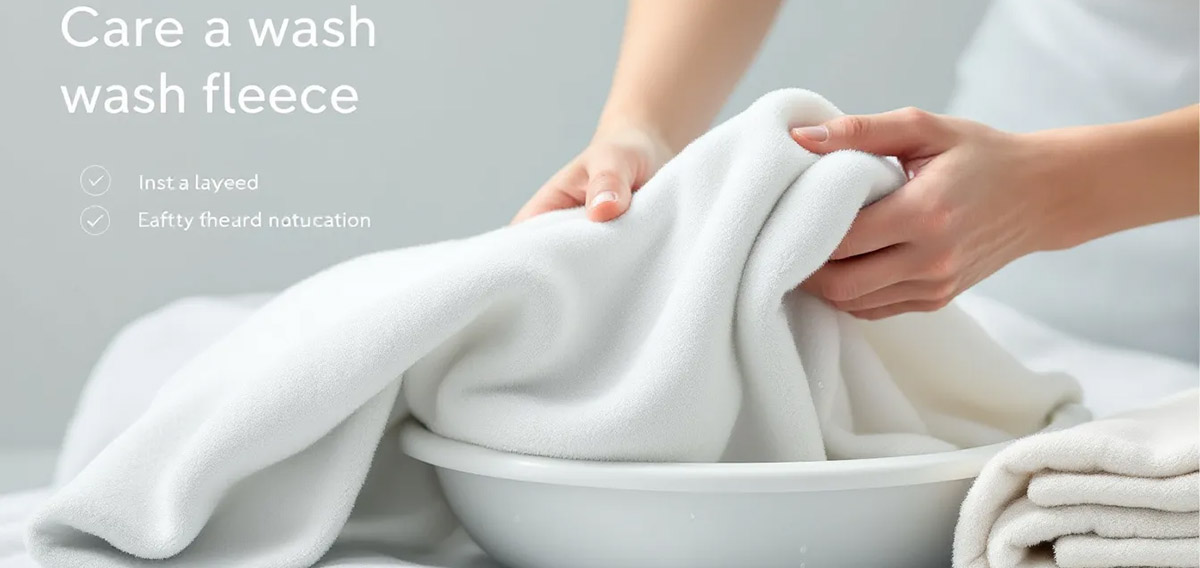What Material is Fleece? A Guide for Fleece Fabric

Fleece is primarily made from polyester, a synthetic fabric known for its warmth and softness. Unlike natural wool, fleece is lightweight, dries quickly, and is easy to care for. In this article, we will explore what material is fleece, what makes it so popular, its composition, and its various uses.
Key Takeaways
-
Fleece is primarily made of polyester, offering warmth, lightweight properties, and quick-drying capabilities, which make it a popular choice for various applications including outdoor apparel.
-
Fleece fabrics come in different types such as polar fleece, microfleece, and eco-fleece, each tailored for specific uses like insulation, breathability, and environmental sustainability.
-
Proper care practices for fleece, including washing techniques to minimize pilling and appropriate drying methods, are essential for maintaining its quality and prolonging its lifespan.
Understanding Fleece Fabric

Fleece fabric is a synthetic textile known for its warmth and softness, primarily made from polyester. Developed in the late 1970s by Malden Mills, fleece quickly became a game-changer in the world of outerwear, offering a lightweight, quick-drying alternative to traditional wool. Its rise to fame was further propelled by Patagonia found, which integrated fleece into its outdoor apparel, cementing its place in fashion and functionality.
The word “fleece” might evoke images of fluffy sheep and natural wool, but modern fleece fabrics are usually made from 100% polyester or blended fibers. This synthetic makeup endows fleece with its unique properties, making it perfect for applications ranging from jackets and blankets to sportswear and uniforms. Knowing what fleece is made of helps in appreciating its versatility and benefits.
Composition of Fleece
At its core, fleece is a synthetic fabric primarily made from polyester, which offers warmth, lightweight properties, and quick-drying capabilities. This polyester fleece mimics the insulating qualities of wool without the heaviness or maintenance challenges associated with natural fibers. The creation process involves knitting the polyester fibers into a fabric that is then brushed to create a fluffy texture that traps air and provides insulation.
While polyester is the main component, fleece fabric can also include blended fibers to enhance its texture and functionality. Some fleece fabrics incorporate other synthetic fibers or even natural ones like wool to enhance softness or durability. Blending materials results in various fleece types, each suited to different needs and preferences.
Properties of Fleece Fabric
Fleece fabric is celebrated for its unique properties that make it a go-to choice for many applications. From its impressive warmth and insulation to its breathability and moisture-wicking capabilities, fleeces stand out as a versatile and practical fabric.
Additionally, its lightweight nature and soft texture add to the smooth comfort and appeal, making it suitable for everything from outdoor gear to cozy windproof waterproof blankets made of the same material lining layers with a smooth side.
Warmth and Insulation
One of the standout features of fleece fabric is its remarkable ability to provide warmth. The secret lies in the tiny pockets of air created by the fabric’s texture, which trap body heat and create an insulating layer with several layers. This is why fleece is often categorized by weight in grams per square meter (gsm), with heavier fabrics providing more warmth. Whether you’re layering up for a cold-weather hike or snuggling under a fleece blanket, the insulation properties of fleece ensure you stay warm and cozy.
High loft fleece amplifies this insulation by trapping more air, making it ideal for extreme cold conditions. This makes fleece a popular choice for outdoor clothing and gear, offering effective thermal insulation without the bulk and weight of traditional materials.
Breathability and Moisture-Wicking
Fleece fabric shines when it comes to breathability and moisture-wicking, making it ideal for active wear. Fleece excels over cotton by wicking moisture away from the skin, allowing evaporation and keeping you dry during high-exertion activities. This is particularly beneficial for outdoor enthusiasts and athletes who need reliable performance from their clothing.
Microfleece, being thinner and softer, excels in moisture management and is often used in performance clothing. Lightweight fleece, usually around 100 grams per square meter, provides excellent breathability, making it ideal for activities like hiking and running where maintaining dryness and comfort is crucial.
Softness and Comfort
The plush texture of fleece is one of its most beloved features, offering a soft and comfortable feel against the skin. This softness comes from the brushing process during manufacturing, creating a fluffy surface that enhances comfort. Whether it’s a cozy sweatshirt or a warm blanket, the soft fabric of fleece is a delight to wear and use.
Fleece fabrics are not only soft but also lightweight, making them ideal for garments that require both comfort and ease of movement. Fabric conditioner can further enhance softness, making fleece even more comfortable for sensitive skin. This combination of softness and practicality is why fleece remains a popular choice for a wide range of applications.
Types of Fleece Fabric
Fleece fabric comes in several varieties, each with unique properties tailored to different needs. The most common types include polar fleece, microfleece, and eco-fleece, each offering distinct benefits whether you’re looking for warmth, lightweight performance, or eco-friendly options.
Knowing these different types helps in selecting the right fleece fabric for your specific needs.
Polar Fleece
Polar fleece is perhaps the most well-known type, celebrated for its lightweight yet warm properties. This type of fleece fabric provides excellent insulation without the bulk, making it a favorite for outdoor clothing such as jackets, hats, and gloves. The soft fabric of polar fleece is also water-resistant and breathable, adding to its versatility and practicality.
Polar fleece’s popularity stems from its comfort and ease of maintenance. The Polartec fabric dries quickly and is also known for its fast drying properties, making it perfect for active wear and outdoor adventures where weather conditions can be unpredictable. Additionally, the air pockets within the fabric help trap warmth, ensuring you stay cozy in cold weather.
Microfleece
Microfleece is a lighter, thinner version of standard fleece, typically weighing less than 200 grams per square meter. Despite its lighter weight, microfleece retains the softness and insulation properties that fleece is known for, making it ideal for layering and performance clothing. This type of fleece fabric is particularly popular in active wear where breathability and moisture-wicking are essential.
The exceptional softness of microfleece makes it a preferred choice for garments that are worn close to the skin. Whether it’s a base layer for outdoor activities or a cozy loungewear piece, microfleece offers comfort without compromising on performance. Its lightweight nature also means it dries quickly, adding to its practicality for various applications.
Eco-Fleece
Eco-fleece stands out as an environmentally friendly alternative, made from recycled PET (polyethylene terephthalate). This sustainable option reduces the need for new fossil fuel extraction and offers a way to repurpose plastic bottles into useful fabric. Eco-fleece provides the same warmth and comfort as traditional fleece but with a significantly lower environmental impact.
Besides recycled polyester, eco-fleece may include natural materials like organic cotton and hemp, further boosting its eco-friendly credentials. These natural alternatives are less harmful to the environment due to sustainable farming practices, making eco-fleece a responsible choice for the environmentally conscious consumer.
Comparing Fleece to Other Fabrics

Fleece fabric often finds itself compared to other popular materials like wool and cotton. Each has its own set of advantages and drawbacks, making them suitable for different applications and preferences. Knowing these comparisons helps in making informed choices about which fabric best meets your needs, whether for warmth, breathability, or ease of care.
Fleece vs. Wool
While both fleece and merino wool offer excellent warmth, they differ significantly in terms of composition and care. Fleece is made from synthetic fibers, primarily polyester, making it lightweight, quick-drying, and easier to care for than wool. Wool fleece, on the other hand, is a natural fiber that retains warmth even when wet but can be more challenging to maintain and is often more expensive.
Fleece is typically softer and less likely to cause skin irritation compared to wool, which can sometimes be itchy for sensitive wearers. This makes fleece a more comfortable option for everyday wear, while wool might be preferred for its natural properties and traditional appeal.
Fleece vs. Cotton
When it comes to warmth and insulation, fleece outperforms cotton, making it a better choice for cold weather. Fleece’s superior moisture-wicking properties also mean it keeps you dry and comfortable during high-exertion activities, whereas cotton can absorb moisture and leave you feeling warmer and damp.
However, cotton is known for its breathability and softness, making it a popular choice for casual wear and summer clothing. Fleece, with its quick-drying and insulating properties, is more suited for winter wear and outdoor activities where warmth and moisture management are crucial.
Caring for Fleece Fabrics

Proper care maintains the quality and longevity of fleece fabrics. From washing and drying to storing and preventing pilling, taking the right steps can ensure your fleece garments remain soft, warm, and in good condition for years.
Washing Fleece
Fleece fabrics can be machine washed safely, but certain precautions are needed to preserve their quality:
-
Always turn fleece items inside out before washing to minimize pilling.
-
Use a mild liquid detergent.
-
Wash in cold or lukewarm water to avoid damaging the fibers.
To reduce pilling, wash fleece items with other soft fabrics and avoid fabric softeners, which can promote fiber breakage. If pilling occurs, remove it with a fabric shaver or a soft-bristled brush for a cleaner appearance.
Drying and Storing Fleece
Avoid high heat when drying fleece as it can damage the fabric. To preserve its softness and shape:
-
Air drying is best.
-
If you must use a dryer, opt for a low heat setting.
-
Remember that polyester can melt under high temperatures, so it’s best to err on the side of caution.
For storage, keep fleece items in a cool, dry place to prevent moisture buildup and maintain their softness. Breathable garment bags help protect fleece from dust and dirt while allowing air circulation, keeping them fresh and ready for use.
Preventing Pilling
Pilling occurs when small fibers break and tangle on the surface of fleece fabric, leading to a worn appearance. To minimize pilling, always wash fleece items inside out and avoid using fabric softeners, which can weaken the fibers.
Microfleece is durable and resistant to pilling, making it practical for items that see frequent use. However, if pilling does occur, it can be managed with a fabric shaver or a soft-bristled brush, keeping your fleece looking its best.
Summary
Fleece fabric, with its warmth, softness, and versatility, has become a staple in many wardrobes and outdoor gear collections. Understanding the different types of fleece, their properties, and how to care for them can help you make the most of this remarkable fabric. From polar fleece to eco-fleece, each type offers unique benefits that cater to various needs and preferences. By following proper care instructions, you can ensure your fleece items remain in excellent condition, ready to provide comfort and warmth whenever you need it.
Frequently Asked Questions
What is fleece fabric made of?
Fleece fabric is primarily composed of synthetic fibers, particularly polyester, known for its warmth, lightweight nature, and quick-drying properties.
How does fleece compare to wool in terms of warmth?
Fleece is comparable to wool in warmth due to its air-trapping capabilities, but it is lighter, dries faster, and is generally softer on the skin. Therefore, if you're looking for a lightweight and quick-drying option, fleece might be the better choice.
What are the different types of fleece fabric?
The different types of fleece fabric include polar fleece, microfleece, and eco-fleece, each serving distinct purposes like outdoor wear, lightweight clothing, and sustainable options respectively. Understanding these types can help you choose the right fleece for your needs.
How should I wash fleece fabrics to avoid damage?
To avoid damage when washing fleece fabrics, use cold or lukewarm water with a mild liquid detergent, turning items inside out to minimize pilling, and refrain from using fabric softeners. This approach will help maintain the fabric's quality and longevity.
What is eco-fleece and why is it considered eco-friendly?
Eco-fleece, made from recycled PET like plastic bottles, is considered eco-friendly because it reduces the demand for new fossil fuels and minimizes environmental impact while providing warmth and comfort similar to traditional fleece.
Contact MH
MH offers fleece fabrics. Please contact us for more details or inquiries. We're here to help!


